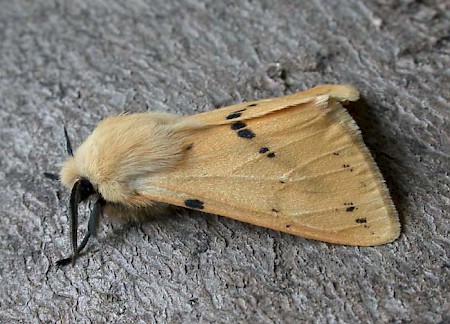Ecaille-lièvre : Différence entre versions
m (A déprotégé « Ecaille-lièvre ») |
m (A déprotégé « Ecaille-lièvre ») |
||
| (Une révision intermédiaire par le même utilisateur non affichée) | |||
| Ligne 1 : | Ligne 1 : | ||
[[Category:Insectes]] | [[Category:Insectes]] | ||
| − | [[Image:Ecaille_lievre_Spilosoma_luteum.jpg]]<br> Ecaille lièvre ''Spilosoma luteum'' - | + | [[Image:Ecaille lievre Spilosoma luteum.jpg|Image:Ecaille_lievre_Spilosoma_luteum.jpg]]<br> Ecaille lièvre ''Spilosoma luteum'' - photo © Ian Kimber |
====== Etymologie ====== | ====== Etymologie ====== | ||
| Ligne 10 : | Ligne 10 : | ||
====== Description ====== | ====== Description ====== | ||
| − | |||
*'''Taille''' : 28-40 mm. | *'''Taille''' : 28-40 mm. | ||
| − | + | *-- | |
====== Plantes hôtes ====== | ====== Plantes hôtes ====== | ||
| − | + | *'''Chenille polyphage''', sur diverses plantes herbacées, buissons, arbustes : dont ''Alnus'' sp., ''Mentha'' sp., ''Plantago'' sp., ''Quercus'' sp., ''Rheum'' sp., ''Ribes'' sp., ''Rubus'' sp., ''Rumex'' sp., ''Senecio'' sp., ''Urtica'' sp. | |
| − | * | ||
| − | |||
====== Répartition ====== | ====== Répartition ====== | ||
| − | |||
*'''Eurasiatique'''. | *'''Eurasiatique'''. | ||
| − | |||
====== Habitat ====== | ====== Habitat ====== | ||
| − | |||
*-- | *-- | ||
| − | |||
====== Ecologie ====== | ====== Ecologie ====== | ||
| − | + | *'''Période de vol''' : mai-juillet. | |
| − | *- | + | *Souvent attiré par la lumière artificielle. |
| − | |||
====== Statut ====== | ====== Statut ====== | ||
Version actuelle datée du 29 septembre 2015 à 16:38

Ecaille lièvre Spilosoma luteum - photo © Ian Kimber
Sommaire
Etymologie[modifier]
- Nom latin : Spilosoma luteum (=Spilarctia luteum)
- Nom anglais : Buff Ermine
- Famille : Arctiidae
Description[modifier]
- Taille : 28-40 mm.
- --
Plantes hôtes[modifier]
- Chenille polyphage, sur diverses plantes herbacées, buissons, arbustes : dont Alnus sp., Mentha sp., Plantago sp., Quercus sp., Rheum sp., Ribes sp., Rubus sp., Rumex sp., Senecio sp., Urtica sp.
Répartition[modifier]
- Eurasiatique.
Habitat[modifier]
- --
Ecologie[modifier]
- Période de vol : mai-juillet.
- Souvent attiré par la lumière artificielle.
Statut[modifier]
- Pas de statut de protection connu.
Bibliographie[modifier]
- Bebbington John & Lewington Richard (2007) - Guide to the hawkmoths of the British Isles. Edition Field Studies Council (FSC).
- Leraut Patrice (2006) - Papillons de nuit d'Europe, bombyx, sphinx, écailles... VOL I. NAP éditions.
- Leraut Patrice (2009) - Papillons de nuit d'Europe, géomètres VOL II. NAP éditions.
- Lewington Richard (2006) - Guide to the day-flying moths of Britain. Edition Field Studies Council (FSC)
- Manley Chris (2008) - British moths and butterflies, a photographic guide. Edition A & C Black.
- Robineau Roland (2007) -Guide des papillons nocturnes de France, plus de 1620 espèces décrites et illustrées. Edition Delachaux & Niestlé.
- Skinner Bernard (2009) -Colour identification guide to moths of the British isles. Edition Apollo Books.
- Townsend M. & Waring P. (2007) -Concise guide to the moths of great Britain and Ireland. Edition British Wildlife Publishing
- Waring Paul & Townsend Martin (2009)- Field guide to the moths of great Britain and Ireland. Edition British Wildlife Publishing.
- Young Mark (1997) -Natural History of Moths. Edition T & AD Poyser Ltd (A & C Black).